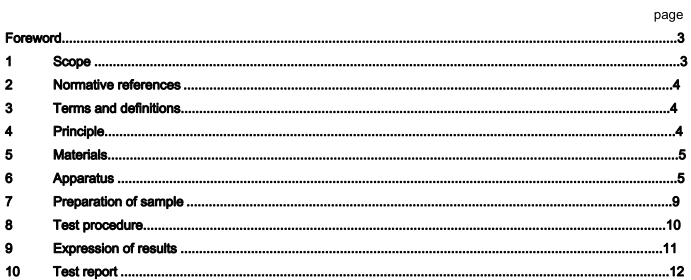BS EN 12274-5:2003 – Slurry surfacing — Test method — Part 5: Determination of wearing

1 Scope
This European Standard specifies a test method for the design of slurry mix based on the determination of the minimum binder content of the mix under wet track abrasion conditions.
This European Standard applies to slurry surfacing to be used in surface layers.
NOTE For some course mixtures the precision is poor due to loss of aggregates comes up, a comment will be made in the report.
2 Normative references
This European Standard incorporates by dated or undated reference, provisions from other publications. These normative references are cited at the appropriate places in the text, and the publications are listed hereafter. For dated references, subsequent amendments to or revisions of any of these publications apply to this European Standard only when incorporated in it by amendment or revision. For undated references the latest edition of the publication referred to applies (including amendments).
EN 12274-3, Slurry surfacing — Test method — Part 3: Consistency.
ISO 48, Rubber, vulcanized or thermoplastic — Determination of hardness (Hardness between 10 IRHD and 100 IRHD).
3 Terms and definitions
For the purposes of this European Standard, the following terms and definitions apply.
3.1
set
end of the non-reversible process when the emulsion coalescence takes place
NOTE 1 The coalescence of an emulsion is the non-reversible phase starting from the beginning of the breaking of the emulsion to the total setting when the bitumen emulsion reverts to bitumen in presence of a mineral.
NOTE 2 After the set of a slurry surfacing:
– it is not possible to stir the mixture;
– free emulsion during washing with water cannot be observed;
– an absorbent paper is not stained when pressed slightly onto the surface of the slurry.
3.2
set time
time elapsed between placing a slurry surfacing and its setting
3.3
quick setting slurry
slurry with a set time less than or equal to 30 min
3.4
slow setting slurry
slurry with a set time more than 30 min
4 Principle
Samples are prepared with different binder contents. The samples are tested under water, after which the massloss by abrasion is measured.
The test consists of an abrasive action operated by means of a hard rubber cylinder which exerts a planetary side gear rubbing pressure, applied for 5 min, on the surface of a test sample of slurry previously prepared, cured in an oven, and moistened by immersion.
By using this procedure, the minimum amount of emulsion to withstand the abrasive action of traffic is determined.
BS EN 12274-5:2003 – Slurry surfacing — Test method — Part 5: Determination of wearing